Hanging Out Online with a Real Comics Author
by Sandy Wisneski
How does a teacher know when we have grabbed student interest and reeled them in with a project?
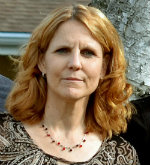
The project began with this driving question: “How would you use superpowers to improve the world?” The final product would be a group comic book. Guidelines for the project included researching a metropolitan location in the Western Hemisphere for the setting, as well as understanding global issues that impacted these locations.
The students used these guidelines as a stepping stone to develop characters and plots for their group comics. Completed comics and promotional posters were displayed on a showcase night for the community and parents to see.
We needed a POW ending
As a culminating activity, I began searching for a “real” comic book artist that the class could interview to develop a deeper understanding of how their project connected to the real world.
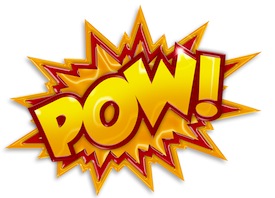
Simmons is not only the creator of comic books for DC, Archie and other publishers, he has penned over 17 middle school and YA novels and founded the Kids Comics Con in New York City.
Mr. Simmons suggested doing a workshop with the class on drawing, including the process behind the creation of comic books. He would guide the students through the steps from brainstorming ideas to the actual inking of the drawings.
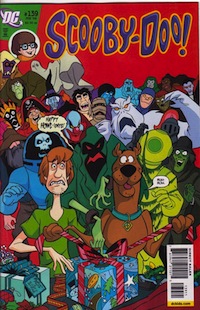
I was excited to see how 51 students would participate in an online workshop using Google Hangout. And my students couldn’t believe that we would be bringing a real-life comic artist from New York into their classroom in our small Wisconsin town.
How our workshop went
Alex Simmons began the workshop with an introduction, describing his broad experience as a writer, actor and playwright, as well as an artist.
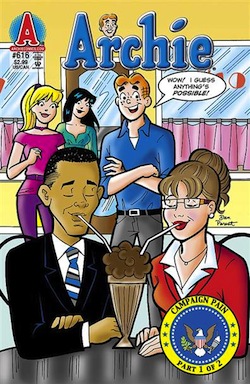
Simmons outlined the various roles (writer, penciler, inker, colorist, and captioner) involved in creating a comic book. Collaboration is an essential element of our project-based school, and our guest offered a perfect example from a publishing business that students are very familiar with.
Simmons then demonstrated the technique of drawing a character with a few basic shapes. Students copied his steps and discovered how easy it was. He then led a discussion about defining and developing a central character and directed the class to create and draw a character of their own. The reading teacher in me quietly cheered to see how literature was embedded into the workshop.
Technology was not a barrier
Although it was all “at a distance,” the interaction that took place between the students and Mr. Simmons was quite powerful. Each one felt a part of the workshop – listening and contributing, raising their hand to be called on – even though the only connection was a video cam.
During the drawing process, Alex’s sense of humor was apparent. One young lady in the front row had a hard time completing her initial drawing without erasing. She would continually grab her eraser to make changes to her drawing, even though Alex had suggested students first get their drawings on paper and not try to perfect them immediately. Several times, he called out and urged her to put her eraser away (until another student took it away, to much laughter). Somehow, the students kept forgetting that he was also watching them on his own screen.
After the pencil drawings were completed, students were asked to tape a piece of tracing paper over the drawing. Inking (using Sharpies) was the next step. Simmons pointed out that using tracing paper allowed the artist to keep the original so variations could be completed. He also pointed out to a student in the front row that tracing paper allowed the artist to decide which lines they wanted to keep and which ones were mistakes. Students would be able to color the comics after copies were made from the inked copies.
Then Simmons asked students to share their characters and describe what traits were displayed in their drawings. Several students proudly shared drawings and enjoyed his personal attention and questions.
A final question/answer session was the last step in the workshop. Students asked how Simmons became interested in art and how he was able to follow his dream. He attributed his success in life to a combination of a supportive mother who believed in him, hard work with many less-than-glamorous jobs, and a willingness to learn from both your successes and mistakes. His message was inspiring and positive.
Feedback from students and parents
Alex Simmons kept the students involved through each step of the process. You might think that a personal connection would get lost during a Hangout, but that was not the case. The workshop lasted 90 minutes and students were attentive and engaged all the way to the end.
After we bid Mr. Simmons goodbye, students were allowed time to reflect on the experience and discuss what they took away. Every comment was positive. Remarks included, “That was fun!” and “I learned so much about what comic book artists do.” The pride on each face said a lot more than the words that were spoken.
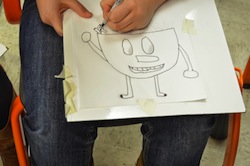
A parent who visited during our hangout also emailed Alex. Here is one of her comments:
I wanted to take just a brief moment to personally thank you for your time, expertise, outstanding information, and phenomenal interaction with the students. I know it was difficult for you to see all the students in our ‘village’, but I can personally attest to the high level of engagement and interest.”
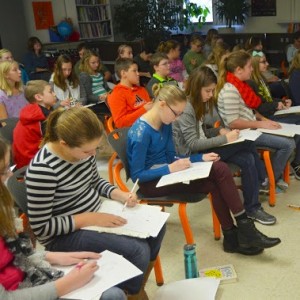
In retrospect, this was an incredible experience for the students that they would not otherwise have been able to participate in, without considerable travel and/or expense.
Each time I reach out to an expert, I learn that the global community of professionals is filled with friendly and willing individuals who want to share their knowledge and passion with young people and who can validate, encourage and inspire their dreams.
See all of Sandy’s photos of the event here.
Sandy Wisneski is lead teacher at Catalyst Charter Middle School in Ripon, Wisconsin. She is the district webmaster, tech mentor, and yearbook advisor as well as new teacher mentor. Over the past 37 years she has become certified as a Flat Classroom Teacher and obtained her masters in reading. She enjoys challenging students to “take ownership” for their learning and to be effective digital citizens in the world.

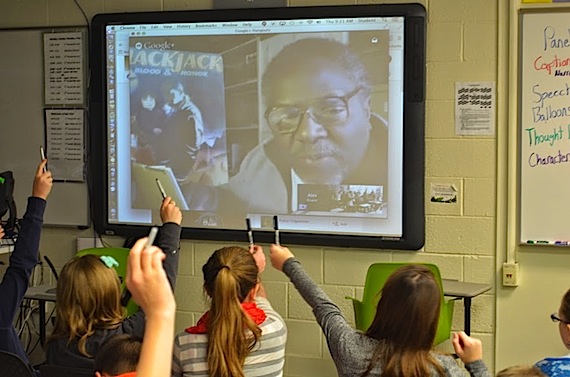
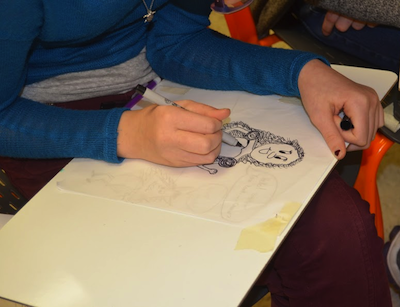
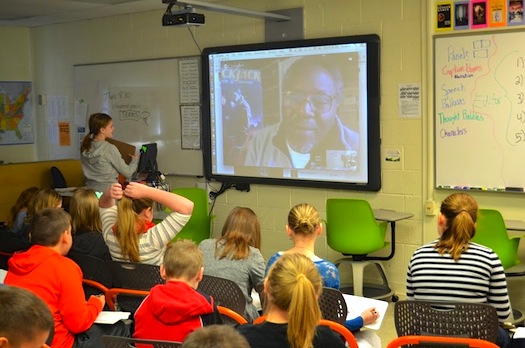
































Great project! Struck gold with a very good online facilitator as well.
Sounds great. I look forward to trying this next year.